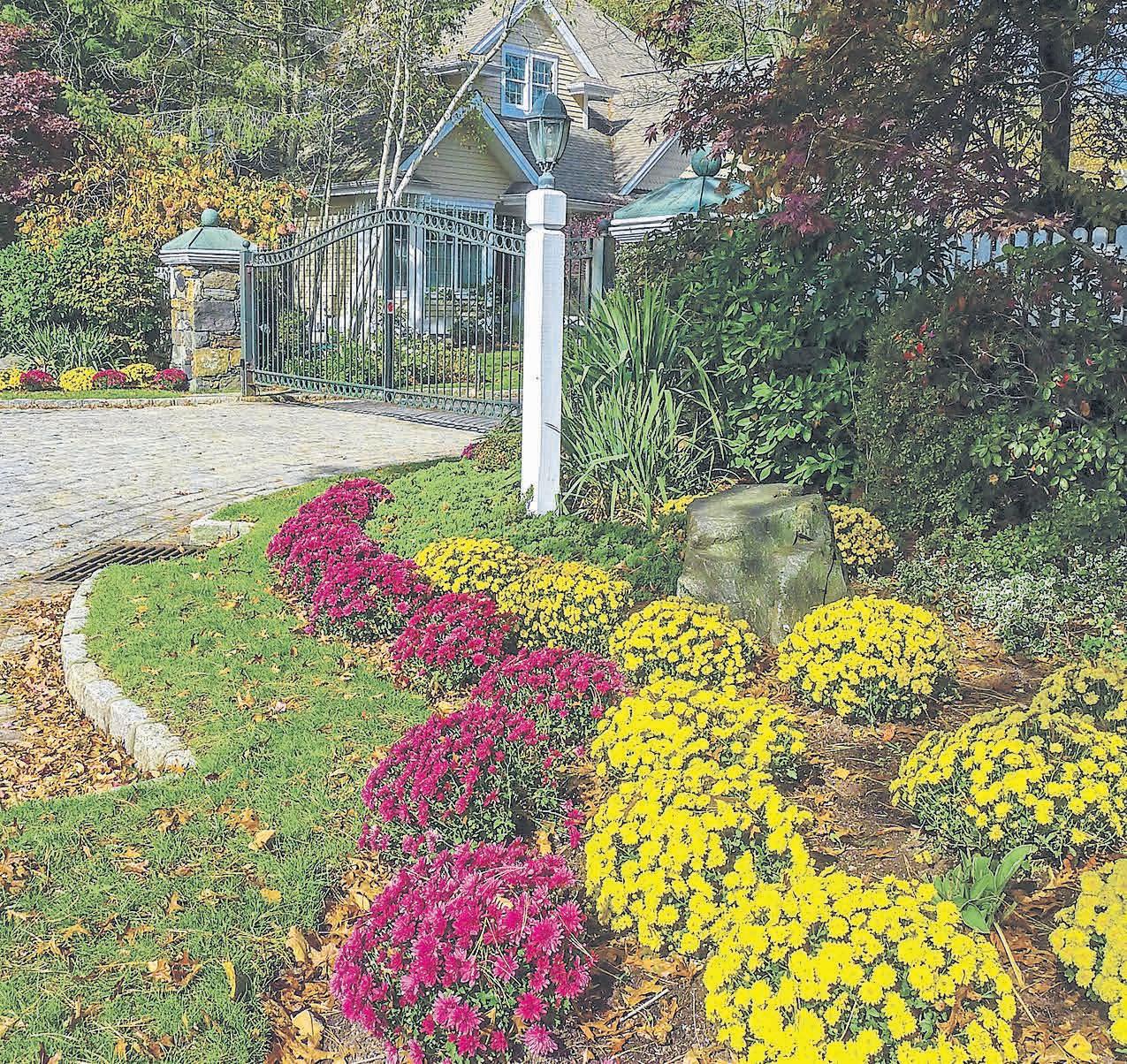
5 minute read
Your guide to outdoor lighting
Accent and landscape lighting
A bevy of accent lighting choices are available. Accent lighting is designed to enhance the mood and appearance of certain elements of a landscape. Accent lighting is not intended to add bright light. For example, upwarddirected lights can be cast on trees or shrubs to accentuate their shapes.
Advertisement
Accent lighting also may call out a structure, such as a garden or a fountain. While accent lighting may be hardwired, homeowners who want the luxury of changing lighting can opt for solar fixtures, which are more mobile but not as bright.
Lighting is an essential component of interior and exterior home design. ABOVE: Lighting can transform outdoors spaces for the better.
Not only does it add style and make spaces more appealing, when done correctly, it also makes a home safer and more functional.
Homeowners who plan to utilize outdoor spaces like backyards, front porches and walkways to the fullest should think carefully about lighting. These guidelines can assist with selecting outdoor lighting fixtures.
Security lighting
Flood lights and security lights are a good investment for those who want to beef up visibility and security around the home. These lights are high-intensity and designed to illuminate large areas.
The brightness and reach can serve as a preventive measure to keep animals and even criminals away. Motion-sensor lights will immediately engage if something crosses the path of the sensor. Some lights will remain on from dusk until dawn. Lowes Home Improvement suggests using the correct wattage on outdoor security lights so they flood an area thoroughly without affecting neighboring properties.
Wall, post and ceiling lights
Outdoor lighting fixtures beyond security options come in a variety of styles, according to Lamps USA. Wall lights are mounted to the outdoor wall of the home. These typically flank doorways or the garage. Post lights are often installed on the posts of decks and porches, or are free-standing on properties, providing visibility but also style. Ceiling-mounted lights may be above doorways or installed in any structure that has an overhead area. Warm-colored temperature bulbs in these fixtures can create an inviting atmosphere that is not too bright and jarring, especially when multiple lighting fixtures are working together. When selecting lighting for wall-mounted fixtures, experts suggest sizing up if you are not sure of the size to pick, as lights will look much smaller in scale from a distance.
Your guide to outdoor lighting
Additional pointers
■ When shopping for bulbs, consider the number of lumens. A standard 100watt bulb produces around 1,600 lumens. Security lights should range from 700 to 1,300 lumens for optimal brightness. Other lights needn’t be so bright. ■ Ensure that any fixtures that are being used are safetyrated for outdoors. Wet-rated fixtures are designed to withstand direct exposure to outdoor elements, advises the design experts at Schoolhouse, a lighting and lifestyle goods company. ■ Damp-rated fixtures are built for outdoor locations protected from harsh weather. Look for the product details or work with an electrician to choose the right lighting choices.

Warm weather means more time to relax outdoors.
For those homeowners lucky enough to have entertaining spaces outside, spring and summer provides plenty of opportunities to enjoy fresh air under the sun or stars.
Over the last few years, families have become especially familiar with what works about their yards and where there is room for improvement.
Pandemic-related travel restrictions and early stay-at-home mandates resulted in plenty of time spent in backyards on staycations. Even though many such restrictions have been lifted, homeowners may have seen the benefits of having functional respites right outside their doors.
A backyard renovation can cost anywhere from $5,000 to $50,000. The American Society of Landscape Architects suggests homeowners budget the cost of a major landscaping project at between 5 and 10 percent of their home’s value. Large or small, here are ways to make an outdoor oasis at home.
Create living privacy
Living in close proximity to neighbors may make privacy harder to come by. Wood or vinyl fences, however effective, may not provide the all-natural look many people desire.
Vertical gardening, which trains easy-care vines like English ivy, Clematis or various climbing roses to grow on trellis or fencing adds greenery and privacy. Hedges and fast-growing shrubs also can be used for natural barriers.
Extend the living space
Decks and patios can help make outdoor entertaining areas more comfortable by eliminating the need to sit on the grass or gravel. Plus, they add another “room” to the home. When paired with weatherproof patio furniture, such as sofas, loungers and tables, a private seating area can be crafted and utilized for any number of entertaining desires.
Provide outdoor atmosphere
Create a bespoke bistro vibe by using freestanding planters and posts along with hanging lights to make an intimate outdoor hangout spot at night. For those with permanent structures, like a deck or a gazebo, lights can be strung across the area or on railings or edging.
ABOVE: Additional oasis-inspired ideas include outdoor kitchens, setting up lanterns, cascading water features, and bird feeders to attract the sounds of nature.
Install a pool
Pools are the ultimate spots to cool off on hot days. An elaborately shaped inground pool can blend in with the landscape and offer the ultimate hang-out zone. However, above-ground pools also serve the purpose and are more budget-friendly.
Stock tank pools are popular among those who want minimal pool expenditure or have small spaces to work with. Stock tanks are metal vessels traditionally used as watering holes for livestock. They also can be “adult kiddie pools” when combined with some plumbing. Galvanized steel frames make them sturdy. With floats and other accessories, they can become the perfect oasis.
Hang a hammock
Few things evoke feelings of relaxation better than a hammock. Fitted between two trees (or two posts if trees are sparse), a hammock is an ideal place to grab a nap or read a book.








